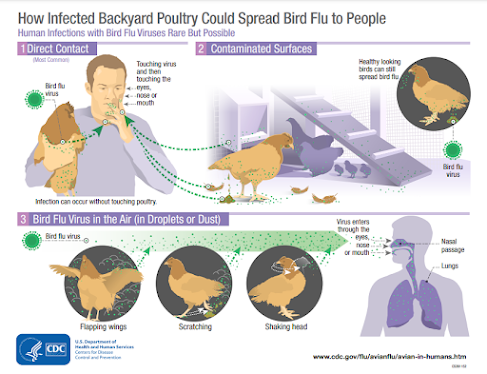#16,694
Up until about 18 months ago, the zoonotic potential of the Eurasian H5Nx virus - which should not be confused with China's more pathogenic H5N6 virus - was considered low (see Emerg. Microbes & Infect.: Low Zoonotic Potential Of Clade 2.3.4.4B H5N8 Virus), although we'd seen hints that a few mutations might change that assessment (Sci Rpts: H5N8 - Rapid Acquisition of Virulence Markers After Serial Passage In Mice).
In early 2021 Russia announced that they had detected 7 (mild or asymptomatic) cases of human H5Nx infection, which was followed by cases Nigeria in the spring of 2021, both of which led to the CDC adding Zoonotic Avian A/H5N8 to their IRAT list last May.
On Christmas day, 2021 the ECDC/EFSA Raised The Zoonotic Risk Potential Of Avian H5Nx, which was followed a week later by the announcement that a single case of H5N1 infection had been detected in the UK (see ECDC Epidemiological Summary & Assessment On Novel H5 Influenza Detected In the UK).
Most public health agencies believe the risk to the public is currently low (see CDC Update On `Low Risk' Of Human Infection), but the recently increased spread and incidence of HPAI H5 - and potential exposures to those (primarily) in the poultry industry - makes it imperative that public health agencies and clinicians know how to handle suspected cases.
Today the UKHSA has released updated guidance (see below) on the investigation and management of suspected avian flu cases in England. This is an adjunct to a much larger (46-page) document (see Managing the human health risk of avian influenza in poultry and wild birds: guidance for health protection teams) last updated in 2021.
Testing, Reporting & Lab Information
While the risk of human infection from our current H5N1 epizootic is believed to be low, it is not zero, and is highest for those who have close, direct, or extended contact with poultry or wild birds (see below).



